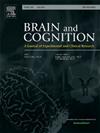视觉工作记忆中的字母识别和空间定位是由独特的刺激依赖神经操作序列实现的
IF 1.4
3区 心理学
Q3 NEUROSCIENCES
引用次数: 0
摘要
工作记忆(WM)通常被概念化为由一个监督的中央执行机构和在短时间内对信息的短期存储组成。在本研究中,我们研究了在高要求的WM表现中参与视觉-语言和视觉-空间信息的神经操作序列。被试完成了语言和空间3-back任务(视觉呈现刺激),并获得了任务表现的事件相关电位(erp)。与言语3-back任务相比,空间任务的前N1/后P1、P2、P3和前晚期负分量振幅(刺激后400+ msec)增强。我们将这些效应解释为在WM过程中反映了空间定向(N1/P1, P2效应)和刺激位置的更新(前P3,后期负性效应)。与空间3-back任务相比,言语任务表现出P150/ N150前分量增强、N2额幅增强、P3分量形态更宽、后定位增强、前正/后负延迟增强(550+ msec)。我们将这些效应解释为反映字母特征的识别(前P150/后N150),刺激冲突监测(N2效应),刺激分类(后P3效应),以及在保留间隔内的排练/更新(后积极/后消极)。这些ERP效应可能反映了与语言/物体和空间信息相关的不同的腹侧和背侧视觉处理流的活动。本文章由计算机程序翻译,如有差异,请以英文原文为准。
Letter identification and spatial localization during visual working memory are enabled by unique sequences of stimulus-dependent neural operations
Working memory (WM) is often conceptualized as consisting of a supervisory central executive and the short-term storage of information over a brief period of time. In the present study, we examined the sequence of neural operations that are engaged for visual-verbal and visual-spatial information during demanding WM performance. Participants completed verbal and spatial 3-back tasks (visually presented stimuli), and event-related potentials (ERPs) were obtained for task performance. There was enhancement of anterior N1/posterior P1, P2, P3, and late anterior negative (400+ msec post-stimulus) component amplitude for the spatial compared to verbal 3-back task. We interpret these effects as reflecting spatial orienting (N1/P1, P2 effects) and updating of stimulus location during WM (anterior P3, late negativity effects). In contrast, the verbal compared to spatial 3-back task exhibited enhancement of an anterior P150/posterior N150 component, frontal N2 amplitude, a broader P3 component morphology with posterior localization, and a late anterior positivity/posterior negativity (550+ msec). We interpret these effects as reflecting identification of letter features (anterior P150/posterior N150), stimulus conflict monitoring (N2 effect), stimulus categorization (posterior P3 effect), and rehearsal/updating over the retention interval (late positivity/posterior negativity). These ERP effects likely reflect activity of the distinct ventral and dorsal visual processing streams associated with verbal/object and spatial information.
求助全文
通过发布文献求助,成功后即可免费获取论文全文。
去求助
来源期刊

Brain and Cognition
医学-神经科学
CiteScore
4.60
自引率
0.00%
发文量
46
审稿时长
6 months
期刊介绍:
Brain and Cognition is a forum for the integration of the neurosciences and cognitive sciences. B&C publishes peer-reviewed research articles, theoretical papers, case histories that address important theoretical issues, and historical articles into the interaction between cognitive function and brain processes. The focus is on rigorous studies of an empirical or theoretical nature and which make an original contribution to our knowledge about the involvement of the nervous system in cognition. Coverage includes, but is not limited to memory, learning, emotion, perception, movement, music or praxis in relationship to brain structure or function. Published articles will typically address issues relating some aspect of cognitive function to its neurological substrates with clear theoretical import, formulating new hypotheses or refuting previously established hypotheses. Clinical papers are welcome if they raise issues of theoretical importance or concern and shed light on the interaction between brain function and cognitive function. We welcome review articles that clearly contribute a new perspective or integration, beyond summarizing the literature in the field; authors of review articles should make explicit where the contribution lies. We also welcome proposals for special issues on aspects of the relation between cognition and the structure and function of the nervous system. Such proposals can be made directly to the Editor-in-Chief from individuals interested in being guest editors for such collections.
 求助内容:
求助内容: 应助结果提醒方式:
应助结果提醒方式:


